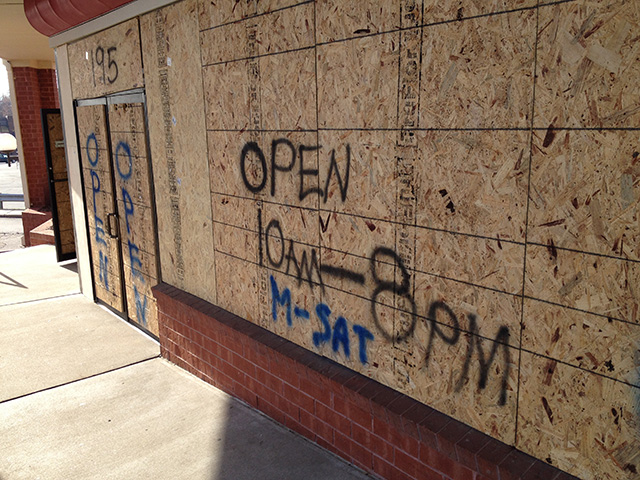The Ferguson I experienced was a far cry from the images we see on TV and online.
Among the charred remains of businesses destroyed during the Nov. 24 riots, joggers passed while families enjoyed a mild sunny morning. I will never forget the smells that emanated with each breeze. It was a burning smell, as if someone were barbecuing.
>>> Part 1: Terrence Williams Is Cleaning Up Ferguson and Spreading a Message You’ll Want to Hear
>>> Part 2: Ferguson Pastor Explains Why His City Doesn’t Have a Race Problem
In capturing video of the sights and sounds of post-riot Ferguson, I met people from all walks of life.
One man noticed me on a sidewalk picking up glass from a shattered window, and we began to talk. He said it was hard for him to understand why businesses would be a target of passion and anger in the wake of the grand jury’s decision.

To my surprise, as the cleanup continued, works of art and hope emerged from the chaos that plagued the city.
Block after block of boarded up windows and doors received new life as artists, families and volunteers painted them with murals and words of inspiration. Some painters told me of the importance of sending a positive message.

But not all the messages were positive.
Outside a gas station located across the street from several buildings that were destroyed by fire and looting, I saw a message scribbled on the sidewalk. It featured hearts etched around the words “black” and “white,” next to a circle with a line struck through the word “blue,” which represented police.

The title for this piece, “Ferguson Faith Files,” came about after my discussion with Terrence Williams, the young man we featured in the first part of our series.
In my initial conversation with him on Thanksgiving Day, he kept referring to his faith as his inspiration for cleaning up after the riots and looting.

In choosing pastor Stoney Shaw from First Baptist Church of Ferguson, I wanted the faith community to share its perspective void of all of the outside voices that have become the narrative of Ferguson.
Williams serves as a great example of how communities begin to heal after unfortunate situations such as this. His story transcends race. It has no political or racial motive. He simply wanted to help make a difference. It was no surprise to learn he was in the process of becoming a St. Louis police officer.

My discussions with Shaw allowed for even more understanding of the events we have witnessed.
As a student at Southern Baptist Theological Seminary, Shaw marched with Martin Luther King Jr. His church is a racial and cultural amalgam of Ferguson. When he speaks of the peaceful protests of the 1960s, we gain new insight into his disappointment in the response of those who took to the streets to riot and loot.

It is our hope through these pieces to show not only what happened, but also why the stories of Terrence Williams and Stoney Shaw matter.
Hopefully, then we call could learn and grow, just as this reporter did covering Ferguson.
All photos by Jamie Jackson.


























